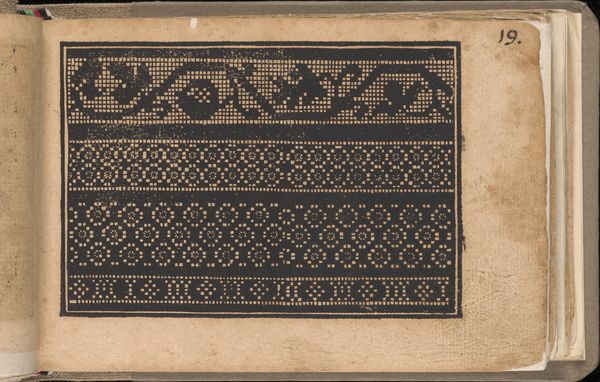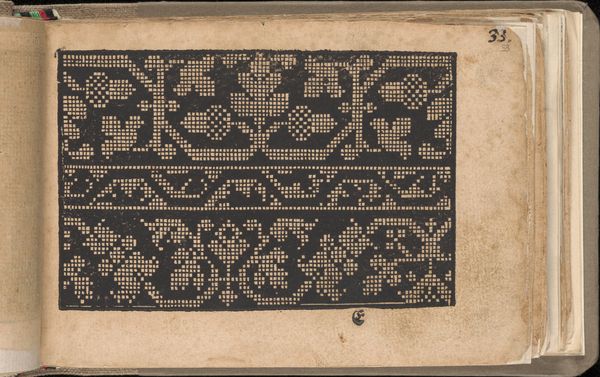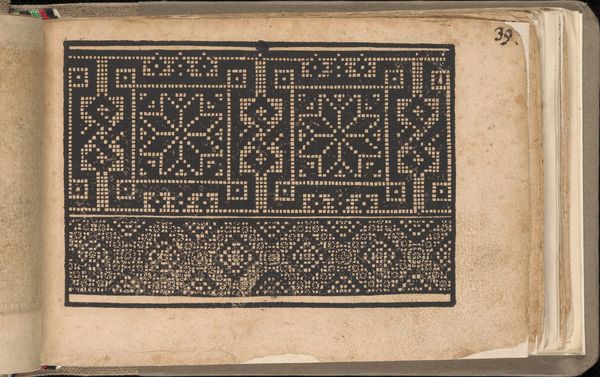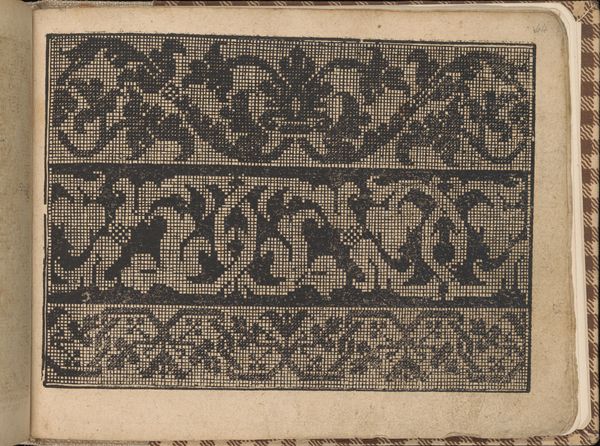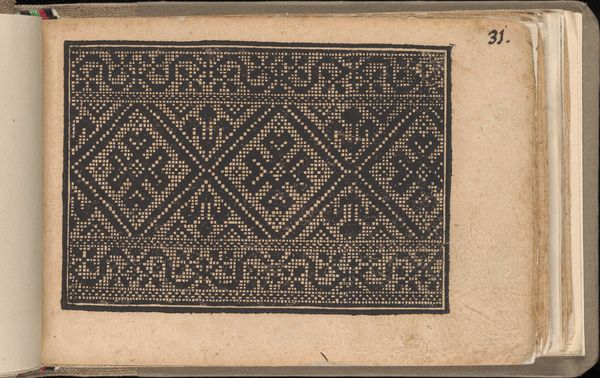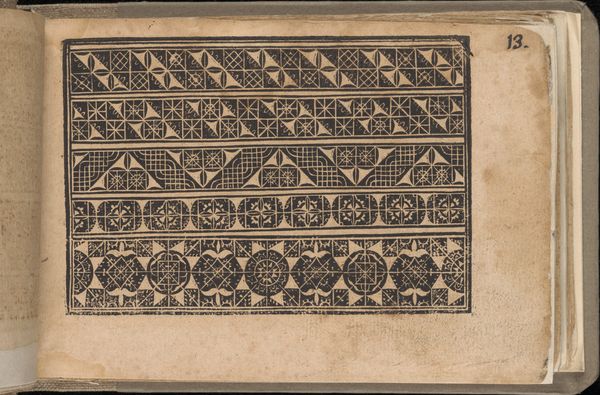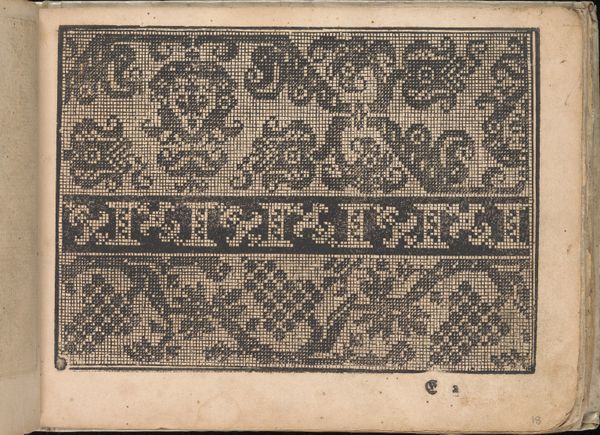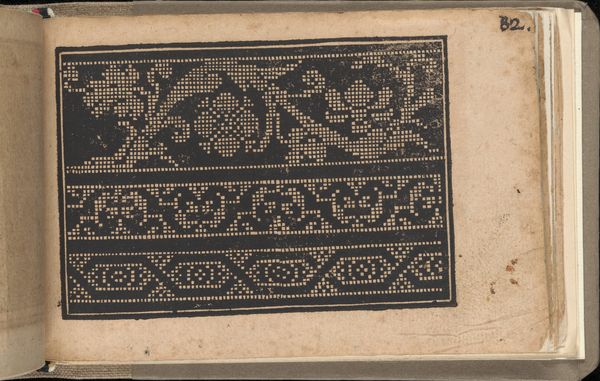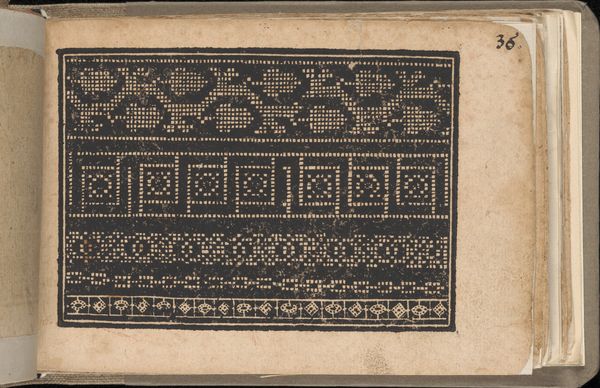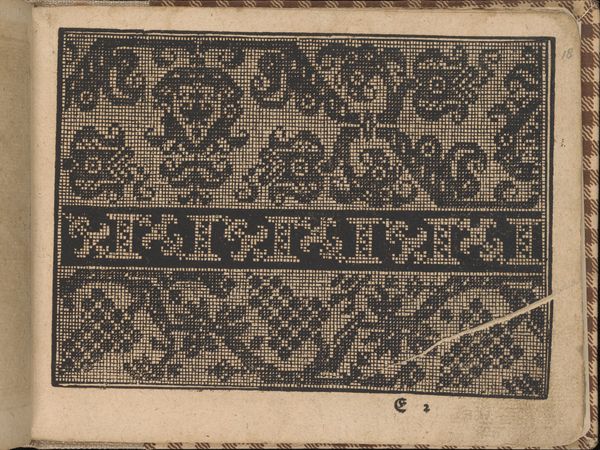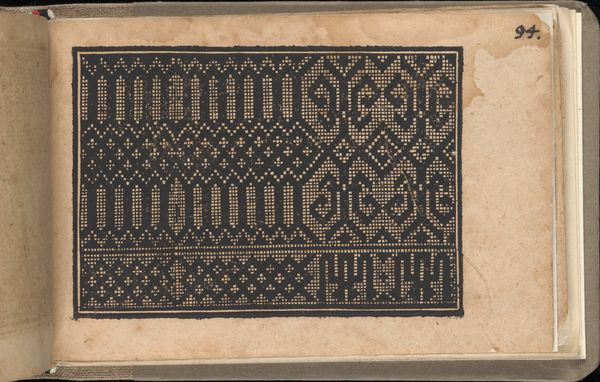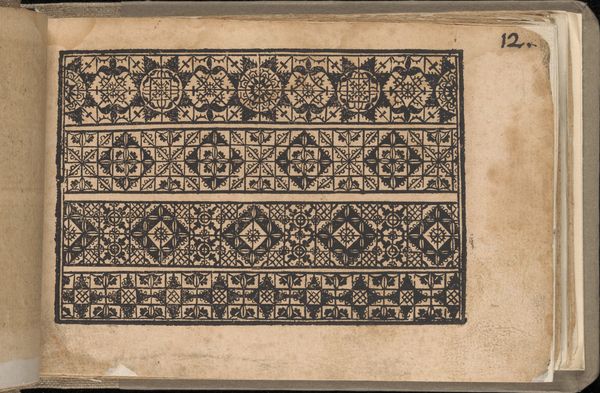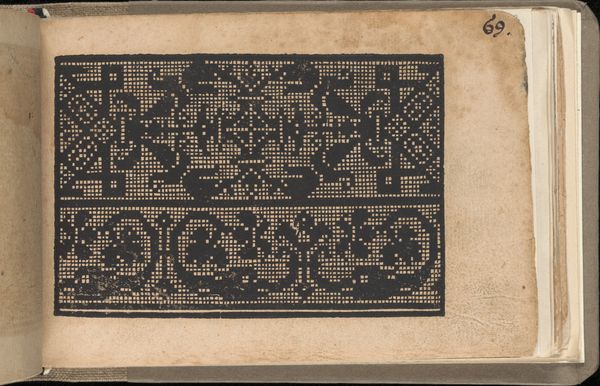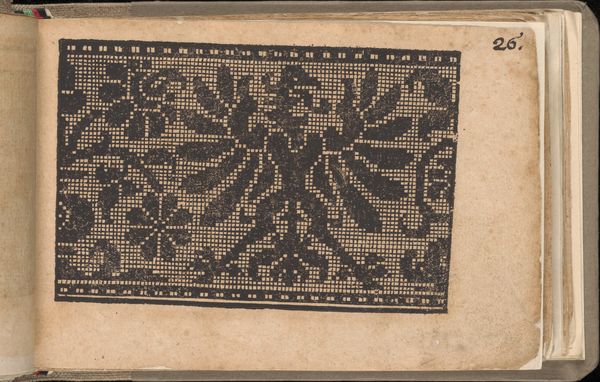
drawing, graphic-art, print, woodcut
#
drawing
#
graphic-art
# print
#
11_renaissance
#
geometric
#
woodcut
#
northern-renaissance
#
decorative-art
Dimensions: Overall: 4 1/2 x 6 11/16 in. (11.5 x 17 cm)
Copyright: Public Domain
Curator: This intricate page, titled "Schön newes Modelbuch (Page 34r)," dates back to 1608 and is currently held at The Metropolitan Museum of Art. It's a woodcut from a model book by Sigismundus Latomus. What are your first thoughts? Editor: Immediately, the density of pattern strikes me. It feels incredibly precise, almost mathematical, but also quite dark. The use of geometric forms gives it an almost oppressive, repetitive quality. Curator: Well, consider its purpose. Model books such as this provided patterns for lacemakers and embroiderers. The seemingly simple materials—wood and paper—were tools of knowledge transfer and skill sharing. They democratized access to design in a way previously unimaginable, especially for women who often engaged in needlework. Editor: Yes, and thinking about it historically, access to these designs would have signified something more than mere craft. Embroidery was a marker of status, and this book served as both a resource and a means to negotiate social roles. It allowed for participation in a visual language of power and privilege, but through the domestic labor of women. Curator: Absolutely. The act of printing these designs transforms needlework, traditionally viewed as domestic craft, into a product informed by larger industrial processes and emerging capitalist systems. The pattern itself becomes a commodity. Editor: And we should acknowledge the socio-economic impact! The circulation of patterns through printed books allowed designs to spread far beyond their place of origin, impacting regional styles, and transforming cultural exchanges. This access, although regulated, granted opportunities for women's self-expression. It is no different from modern online craft communities. Curator: Indeed, this print provides evidence of the complex interplay of craft, labor, gender, and the rising influence of print culture in early modern Europe. A simple tool to instruct has expanded our ideas around access and artistry. Editor: Yes, it highlights the quiet yet profound ways that so-called "minor arts" like needlework contributed to, and were shaped by, larger societal shifts, opening avenues for personal expression, empowerment and social transformation.
Comments
No comments
Be the first to comment and join the conversation on the ultimate creative platform.
